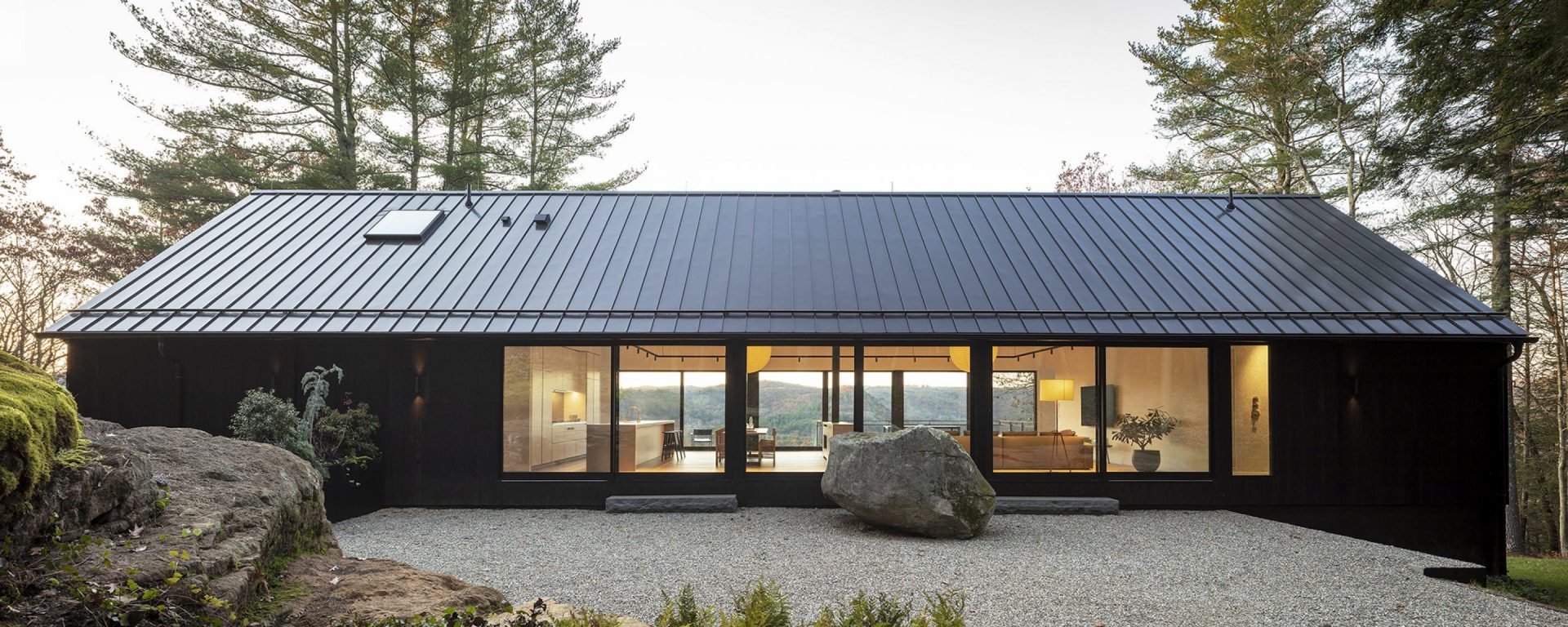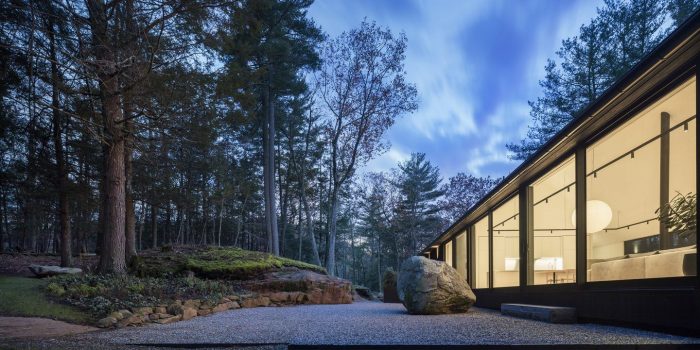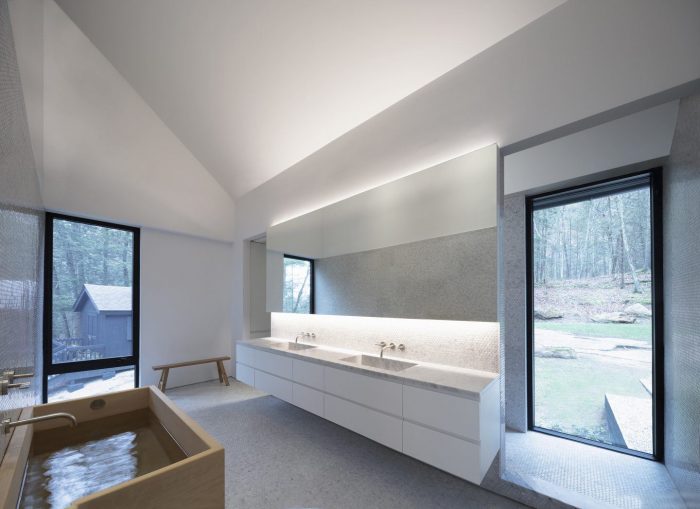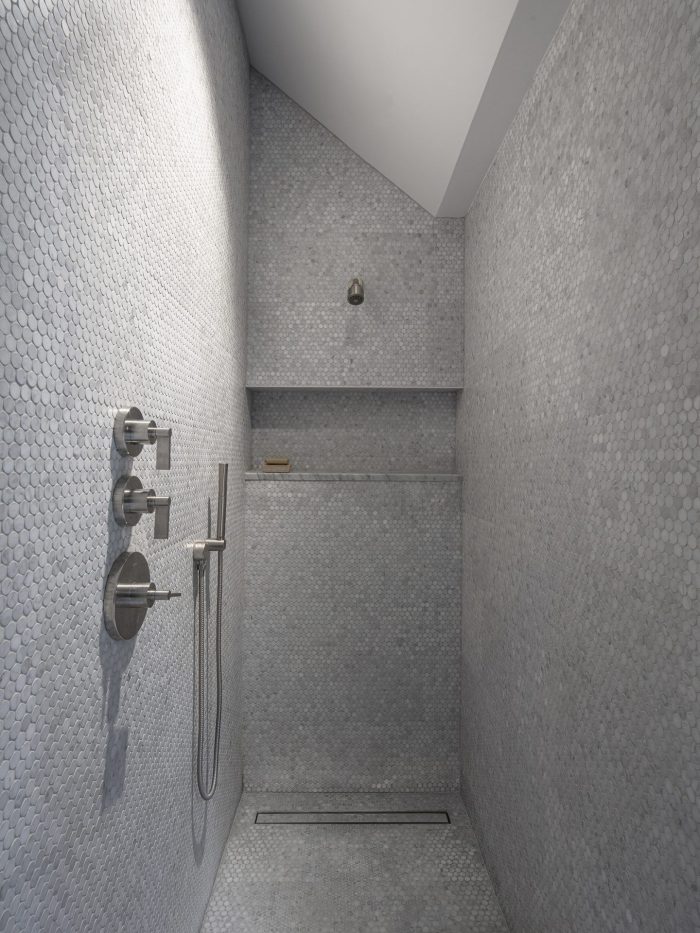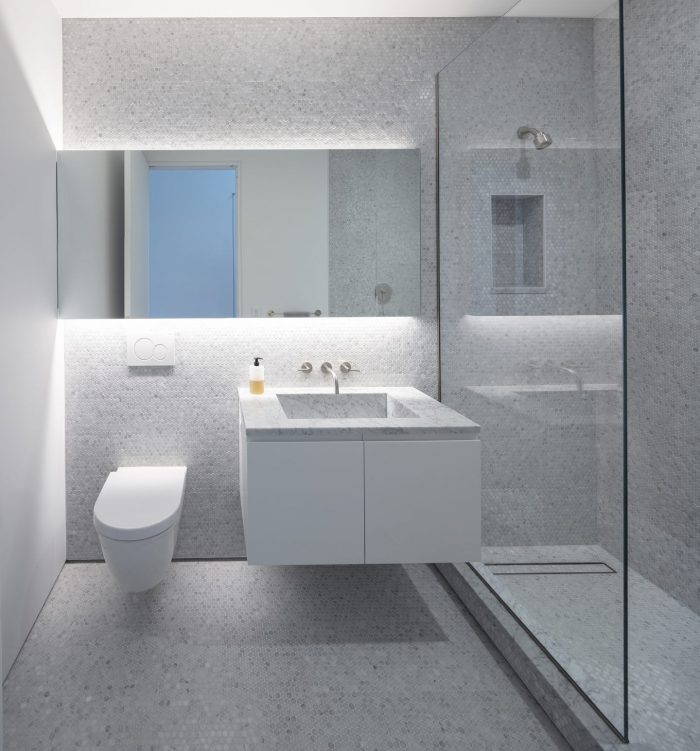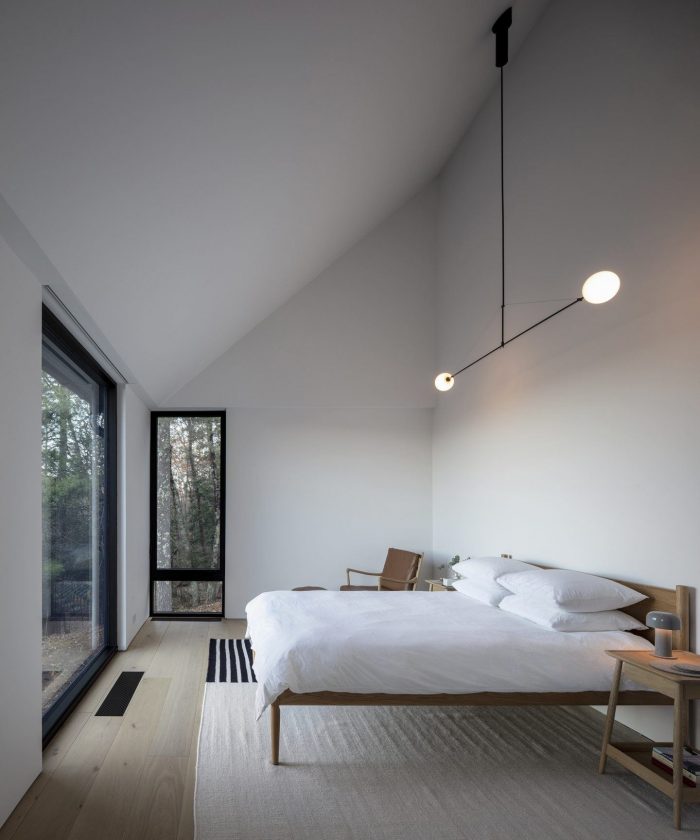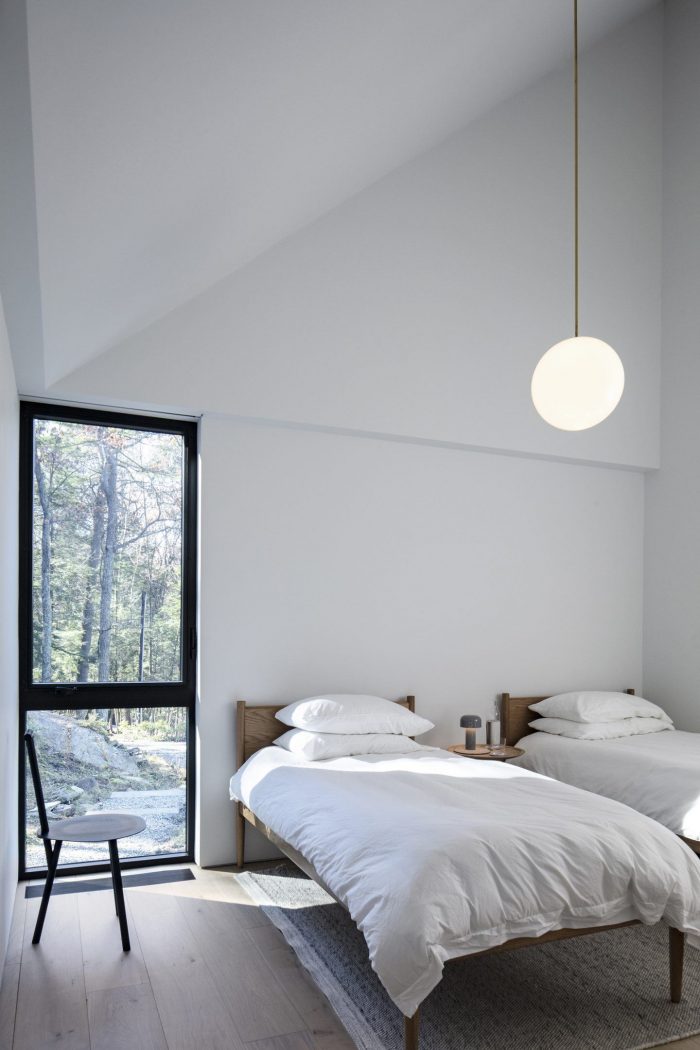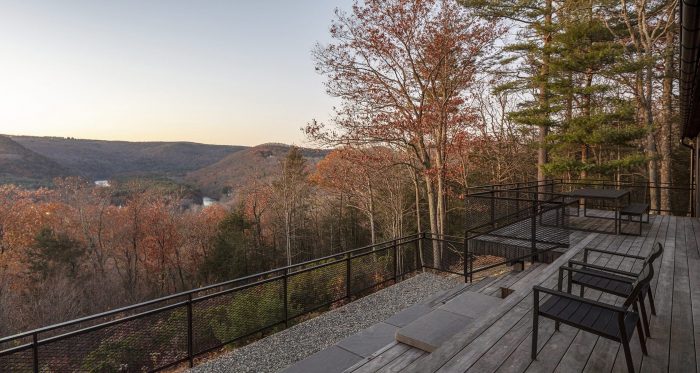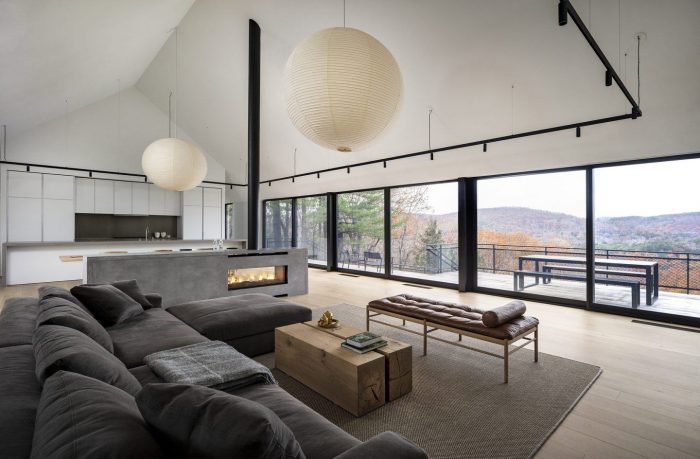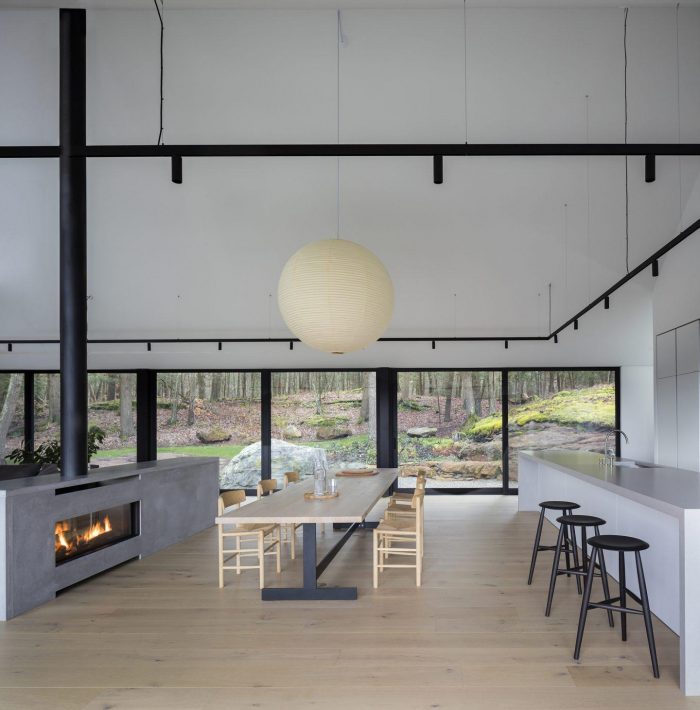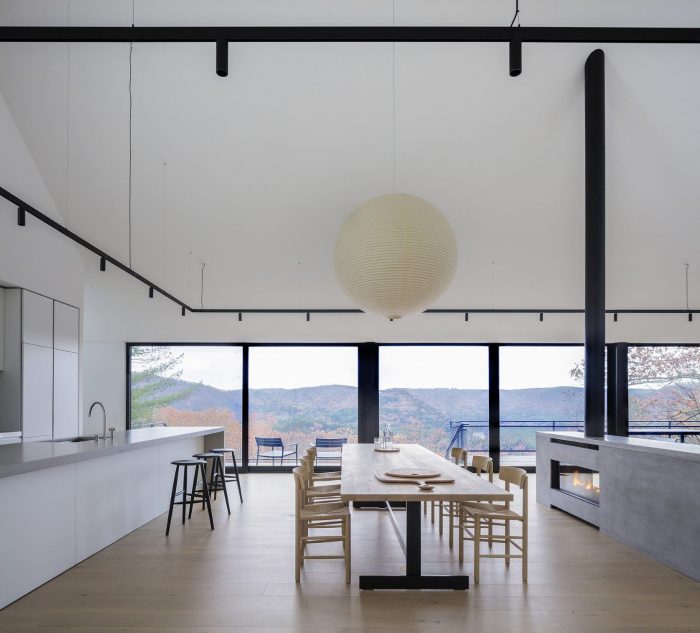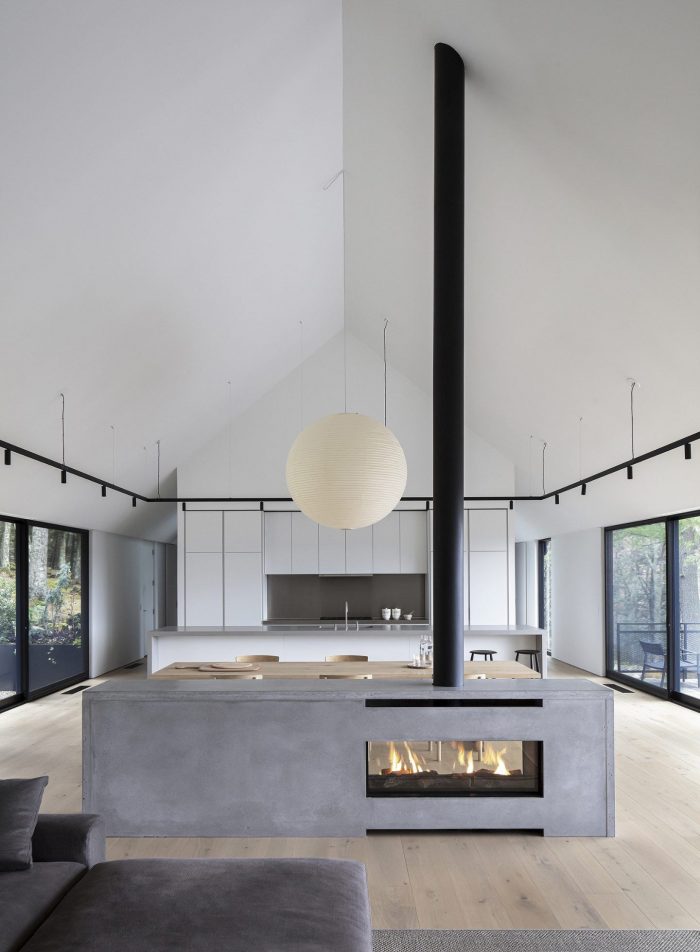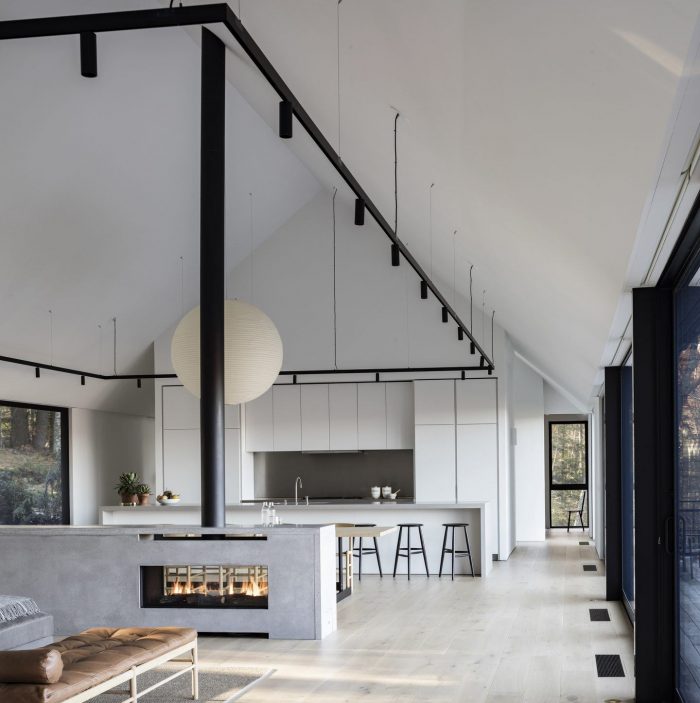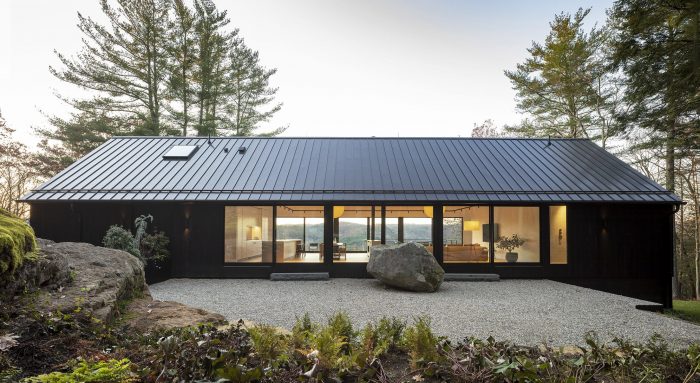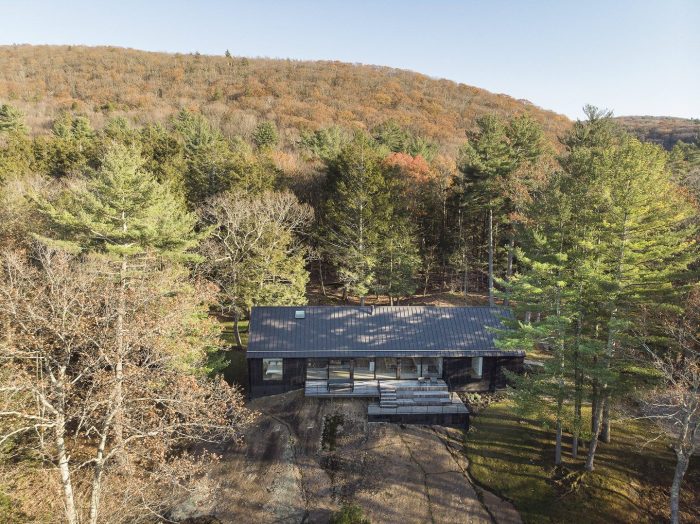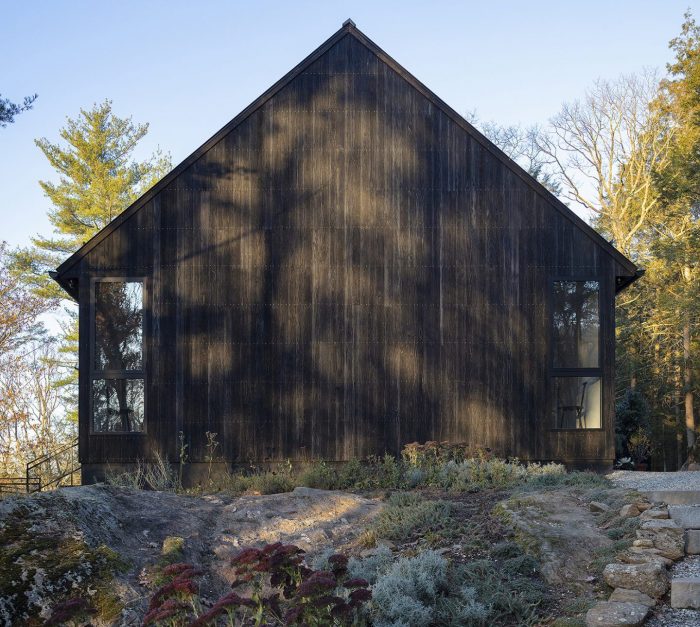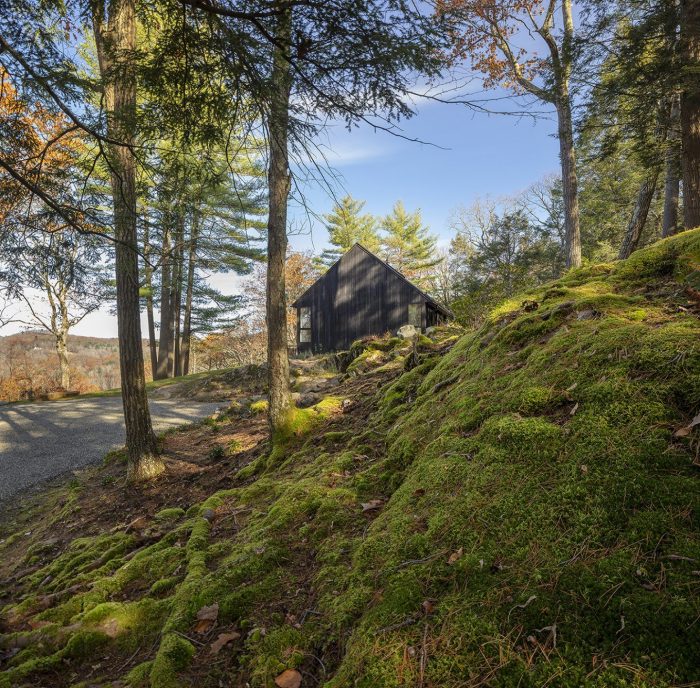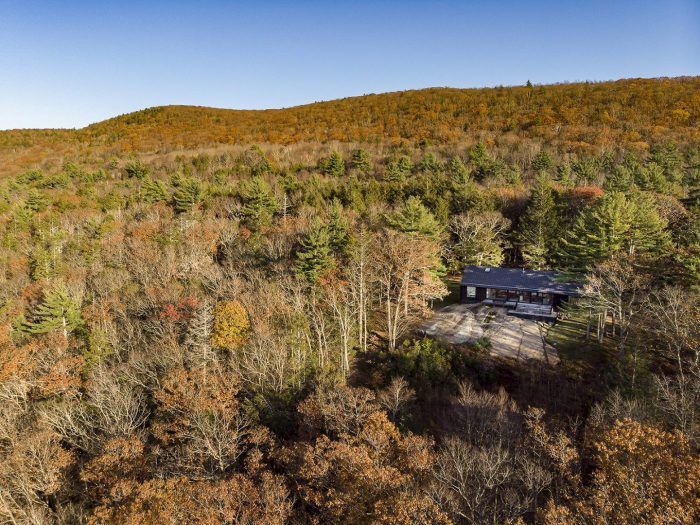总部位于纽约的Desai Chia Architecture事务所为一对寻求在康涅狄格山谷隐居的曼哈顿夫妇设计了一套具有现代感的三卧室住宅。受当地乡土建筑的启发,“岩架屋”以水平的线条、广阔的多功能房间和壮观的森林景观为特色。
该公司的任务是设计一个“与康涅狄格山谷的历史产生共鸣的住宅,包括一个环保的材料调色板,并在一个巨大的岩架上与具有挑战性的场地合作,”他们解释说。该住宅建在原有小屋的场地上。“我们能够重复使用小屋的基础,并增加它来简化建筑的足迹,同时扩大项目,”他们继续说。在结构上,建筑师从当地的谷仓和廊桥中获得灵感,同时也受到了亚洲的影响。住宅的外部覆盖了Shou Sugi Ban sided(一种日本技术,将木材表面烧成深炭黑),它提供了一种抵抗的表面处理,也连接了建筑简单但标志性的三角形形式。宽敞的落地窗和滑动门将建筑结构打开,通向森林覆盖的公园,框出胡萨托尼克河的景观。
New York-based firm Desai Chia Architecture has designed a contemporary three-bedroom house for a Manhattan couple seeking a retreat in the Connecticut Valley. Inspired by local vernacular architecture, ‘Ledge House‘ features horizontal lines, an expansive multipurpose room, and spectacular forest vistas.
The firm was tasked with designing a home “that would resonate with the history of the Connecticut Valley, include a material palette that is environmentally friendly, and work with the challenging site on a large rock ledge,” they explain. The residence was built on the site of a pre-existing cabin. “We were able to reuse the cabin’s foundation and add to it to simplify the footprint of the building while amplifying the program,” they continue. For its structure, the architects took inspiration from the indigenous barns and covered bridges of the area, while nodding to Asian influences. The exterior of the house is clad in Shou Sugi Ban siding—a Japanese technique which involves charring a wood surface to render it a deep charcoal-black—which offers a resistant finish that also articulates the simple yet iconic triangulated form of the building. Expansive floor-to-ceiling windows and sliding doors open the structure to the forested parkland, framing views of the Housatonic River.
Design:Desai Chia Architecture
Photograph:Paul Warchol

